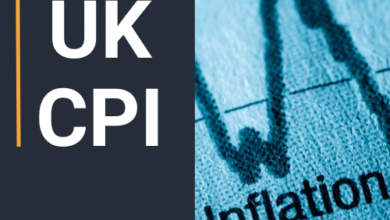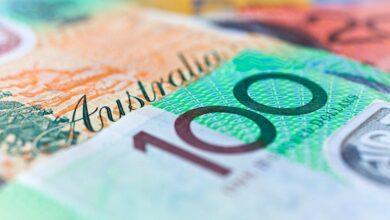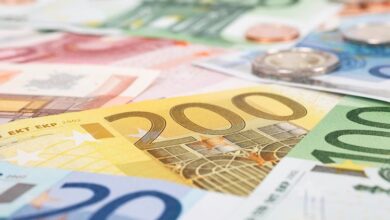Gold awaits US Inflation data for fresh guidance

- Gold price attemps to recover while investors remains cautious ahead of the US inflation data for January.
- Fed policymakers could maintain their hawkish rhetoric if inflation turns out stubbornly high.
- The US Dollar rebounds strongly amid a dismal market mood.
Gold price (XAU/USD) discovers interim support after a sharp sell-off in Monday’s early New York session ahead of the United States Consumer Price Index (CPI) data for January. In addition, major Asian markets are closed on Monday due to the Chinese New Year.
The precious metal remains on edge ahead of US inflation data for January, which may impact the outlook on interest rates. The opportunity cost of holding non-yielding assets, such as Gold, increases if inflation remains stubbornly high as it increases the odds of a hawkish stance from the Federal Reserve (Fed).
Fed policymakers have maintained arguments in favor of higher interest rates for longer until they get confidence that the underlying inflation will sustainably return to the 2% target. The reasoning behind the Fed’s hawkish narrative is the resilient labor market and robust household spending. Fed policymakers have admitted that the inflation data decline is encouraging but is insufficient to unwind the tight interest rate stance.
Daily Digest Market Movers: Gold price find support but remains under pressure in a holiday-thinned trade
- Gold price discovers intermediate support near $2,020 in holiday-thinned trade as major Asian markets such as China, Hong Kong, Japan, South Korea, and Singapore are closed.
- The precious metal is expected to continue with a sideways trend as investors await the United States inflation data for January, which will provide fresh guidance on interest rates.
- The CME FedWatch tool shows that traders see a 53% chance that a rate cut by 25 basis points (bps) could be announced in May.
- According to the expectations, monthly headline inflation is expected to grow at 0.2% in January versus 0.2% in December (revised down from 0.3% initial estimate). In the same period, the core inflation that strips off volatile food and Oil prices is expected to show a rise of 0.3%.
- For annual data, investors anticipate that the headline inflation softened significantly to 3.0% from 3.4% in December. While the core CPI decelerated slightly to 3.8% against the prior reading of 3.9%.
- A stubborn inflation data would allow Federal Reserve policymakers to strongly argue in favor of keeping interest rates higher for a longer period.
- Fed policymakers have been reiterating the need for good inflation data for months to ensure inflation sustainably declining towards the 2% target.
- Dallas Federal Reserve Bank President Lorie Logan said on Friday that there is no need to rush for rate cuts as she wants to confirm durability in progressively declining inflation.
- Meanwhile, the US Dollar Index (DXY) delivers a sharp recovery from the crucial support of 104.00 as investors turn cautious ahead of the US inflation data. The appeal for safe-haven assets improves amid a cautious market mood.
Technical Analysis: Gold price is at make or a break around $2,020
Gold price is at a make or a break level around $2,020 as it is hovering near the upward-sloping border of a Symmetrical Triangle chart pattern plotted from the December 13 low at $1,973. While, the downward-sloping trendline border of the same pattern from the December 28 high is at $2,088. The Gold price drops slightly below the 50-day Exponential Moving Average (EMA), which trades around $2,023.
The 14-period Relative Strength Index (RSI) oscillates inside the 40.00-60.00 range, indicating a prolonged sideways trend.
Inflation FAQs
Inflation measures the rise in the price of a representative basket of goods and services. Headline inflation is usually expressed as a percentage change on a month-on-month (MoM) and year-on-year (YoY) basis. Core inflation excludes more volatile elements such as food and fuel which can fluctuate because of geopolitical and seasonal factors. Core inflation is the figure economists focus on and is the level targeted by central banks, which are mandated to keep inflation at a manageable level, usually around 2%.
The Consumer Price Index (CPI) measures the change in prices of a basket of goods and services over a period of time. It is usually expressed as a percentage change on a month-on-month (MoM) and year-on-year (YoY) basis. Core CPI is the figure targeted by central banks as it excludes volatile food and fuel inputs. When Core CPI rises above 2% it usually results in higher interest rates and vice versa when it falls below 2%. Since higher interest rates are positive for a currency, higher inflation usually results in a stronger currency. The opposite is true when inflation falls.
Although it may seem counter-intuitive, high inflation in a country pushes up the value of its currency and vice versa for lower inflation. This is because the central bank will normally raise interest rates to combat the higher inflation, which attract more global capital inflows from investors looking for a lucrative place to park their money.
Formerly, Gold was the asset investors turned to in times of high inflation because it preserved its value, and whilst investors will often still buy Gold for its safe-haven properties in times of extreme market turmoil, this is not the case most of the time. This is because when inflation is high, central banks will put up interest rates to combat it.
Higher interest rates are negative for Gold because they increase the opportunity-cost of holding Gold vis-a-vis an interest-bearing asset or placing the money in a cash deposit account. On the flipside, lower inflation tends to be positive for Gold as it brings interest rates down, making the bright metal a more viable investment alternative.
Get Best News and Web Services here







